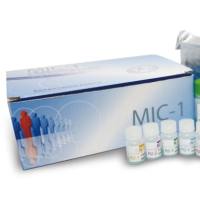The detection of genetic defects in human embryos following in vitro fertilization (IVF) or preimplantation genetic diagnosis (PGD) allows the selection and transfer of unaffected embryos in couples known to be at risk of transmitting an inherited disorder. This avoids the need to termiate an affected pregnancy, following prenatal diagnosis at later stages (1 ). Diagnosis of a single gene defect is usually performed on one or two single cells (blastomeres) biopsied from 8- to 10-cell embryos on the 3rd d postinsemination using nested polymerase chain reaction (PCR) to amplify informative fragments. Nested PCR allows amplification from a limited number of target sequences (2 ), and under carefully optimized conditions, amplification of as few as one or two target copies present in a single haploid or diploid cell is possible (3 –5 ). PGD was first achieved for X-linked diseases by determining the sex of the embryos using a Y chromosome-specific repetitive sequence and selective transfer of only female embryos (6 ). More recently, specific diagnosis has been achieved for cystic fibrosis (CF), by amplifying across the cystic fibrosis transmembrane regulator (CFTR) gene †F508 locus (7 ) and for Lesch-Nyhan syndrome by amplifying across a familial base substitution nullifying a natural Xho I restriction site in the hypoxanthine phophoribosyl transferase (HPRT) gene (8 ). In both instances, nested PCR strategies were chosen to amplify the mutated sequence allowing sufficient amplification for detection on ethidium bromide-stained gels. The limited cycling with the outer primers (20 cycles) reduces nonspecific amplification, and only specific fragments that contain the complementary sequence to the internal primers are amplified to a detectable level in the second round of PCR. Although extra handling is involved, any genomic contaminant introduced after the first round of amplification would not be amplified to a detectable level by the inner primers alone. The efficiency of the second amplification is improved because the denaturation of the first amplification product (amplicon) is easier. Also, the great excess of these amplicons compared with nonspecific sequences eliminates competition, thereby enhancing specificity and yield.






